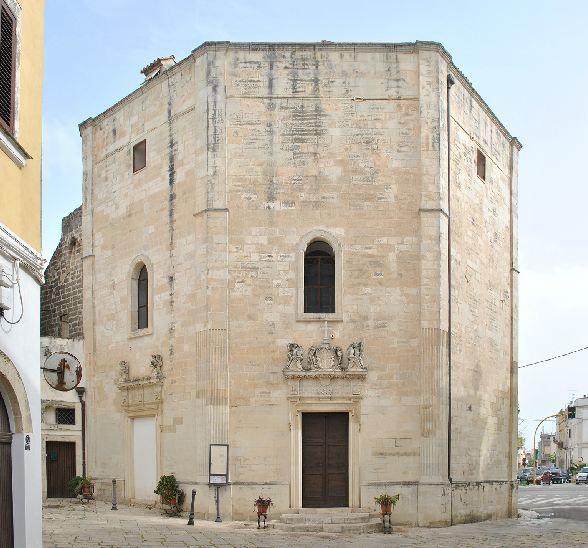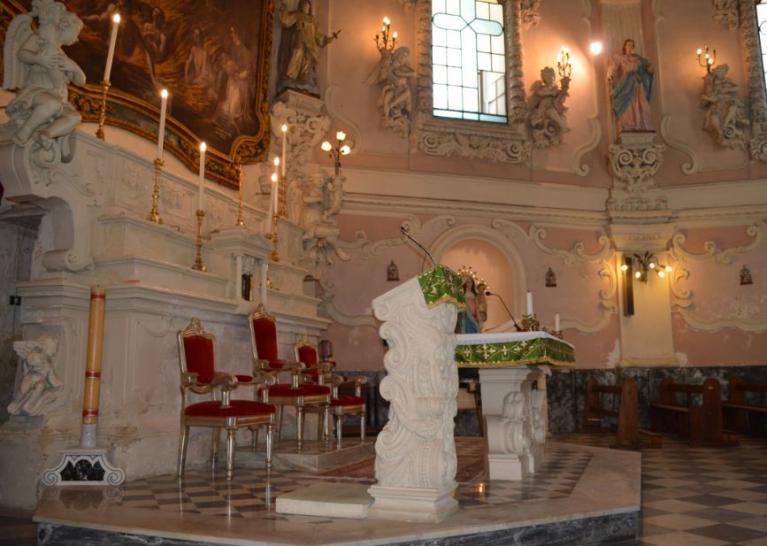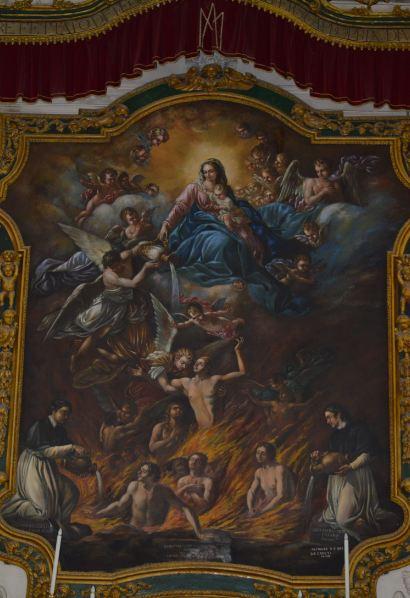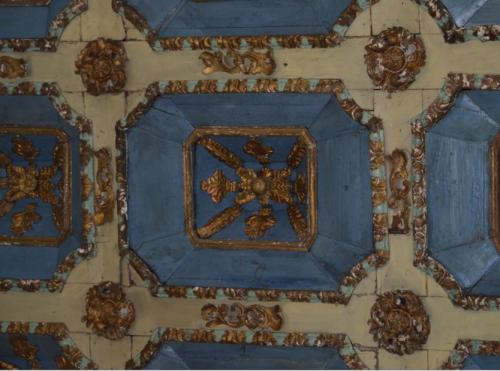Dating
Dedicated to the Anime Sante of Purgatory and also known under the title of the Madonna delle Grazie, this church, located near and on the same city walls of the east, overlooks the final part of via Giuseppe Lillo.
The lay brotherhood of the Souls, born from the abolition of the congregation of St. Catherine of Siena, formerly established in the Dominican convent outside the walls, and recognized with royal assent in 1767, with the presence among its ranks of over 400 brothers (priests , nobles, artisans and peasants), was the commissioner of this church to be given great solemnity to the festivity of the Risen Christ. The construction of the building dates back to the earliest years of the eighteenth century and it was already completed in 1708.
Prospectus
The church, with an octagonal crushed shape, has a central plan and outside 'has nothing remarkable', as De Giorgi said. Its very sober line, barely moved by the presence of the elegant portal, does not absolutely portend the richness and the sumptuousness of the internal apparatus.
Informazioni su Google TraduttoreCommunityPer cellulariTutto su GooglePrivacy e TerminiGuidaInvia commenti
Indoor
The interior is made up of a single high nave, with the characteristic coffered ceiling, with an octagonal plan, horizontally scanned in three orders and illuminated by six large, richly sculpted windows adorned with pairs of angels with cornucopias. The same ship is then vertically scanned by the slight concavity of the Corinthian pilasters, placed at the junction of the perimeter walls. On the plinths of these, in the second order, are placed the following large papier-mâché statues: St. Gregory, St. Nicholas of Tolentino, St. Dominic Patriarch, St. Catherine of Siena, St. Christina and St. Sunday.
On the crowning of the High Altar there is a large canvas depicting the Virgin pouring the "suffrage" to extinguish the flames of the Souls who, after having served their sentence, are lifted from Purgatory. The grandiose composition, even if of an academic school, is a famous work by Serafino Elmo of 1744, commissioned by D.Isabella Maria Spinola, Duchess of Galatina and sister of the pious association.
The trussed roof is hidden by the splendid wooden ceiling, with lacunar octagons. This work is almost certainly the work of master carver April Petrachi. At the center of the ceiling another canvas depicting the Risen Christ of Serafino Elmo. Also in the eighteenth century is the wooden casing, carved and gilded, of the organ.
In the sacristy, in addition to a seventeenth-century wooden statue of the Risen Christ, there is also a canvas depicting St. Catherine of Siena, coming from the altar of the owner, of jus patronatus of the dissolved congregation canonically erected in the church of S. Maria delle Grazie (or rather, today, della Grazia), formerly of the Dominican Fathers. The work is by Giacomo Diso, from Galatino, an appreciated seventeenth-century artist from Salento who has worked actively not only in Galatina, but also in Gallipoli and Castellaneta.
Feast of the Risen Christ
The church is also worthy of note for the festivities in honor of the feast of the Risen Christ, and of the events connected to it.
On the eve of the feast of this festival, in fact, a large bonfire was lit up off the Church of the Souls. The celebrations of the Risen Christ, eight days after Easter, are actually carried out, as well as in this small church, especially in the nearby church of the Souls. The party has a very special story. Still in the recent past this date has almost constituted a 'obligatory appointment' of the peasantry 'for the claim, even tumultuous and violent, of their social and trade union demands. 1903 is, unfortunately, a date that can not be forgotten, also because of the tragic end of the party. In that year, the "revolution of the Risen Christ" ended tragically with numerous dead and wounded, mostly belonging to the "League of the peasants". The day ended in "bloodshed", with mass arrests.


















 Join VisitGalatina
Join VisitGalatina